-
Car Reviews
- All reviews
- Midsize SUVs
- Small cars
- Utes
- Small SUVs
- Large SUVs
- Large cars
- Sports SUVs
- Sports cars
- Vans
Latest reviews
- Car News
-
Car Comparisons
Latest comparisons
- Chasing Deals
If Ford’s E-Transit was a successful proof of concept, the E-Transit Custom elevates the EV van game, giving business owners a good reason to go fully electric
If you had to guess, what do you think is Ford Australia’s third-biggest selling vehicle behind our country’s outright best-selling vehicle – the Ranger ute – and its cousin, the popular Everest large SUV?
If it wasn’t the subject of this review, I’d say it’s fairly unlikely that your answer would be ‘Transit Custom’ – but that’s indeed the case. A van takes the bronze spot for Ford.
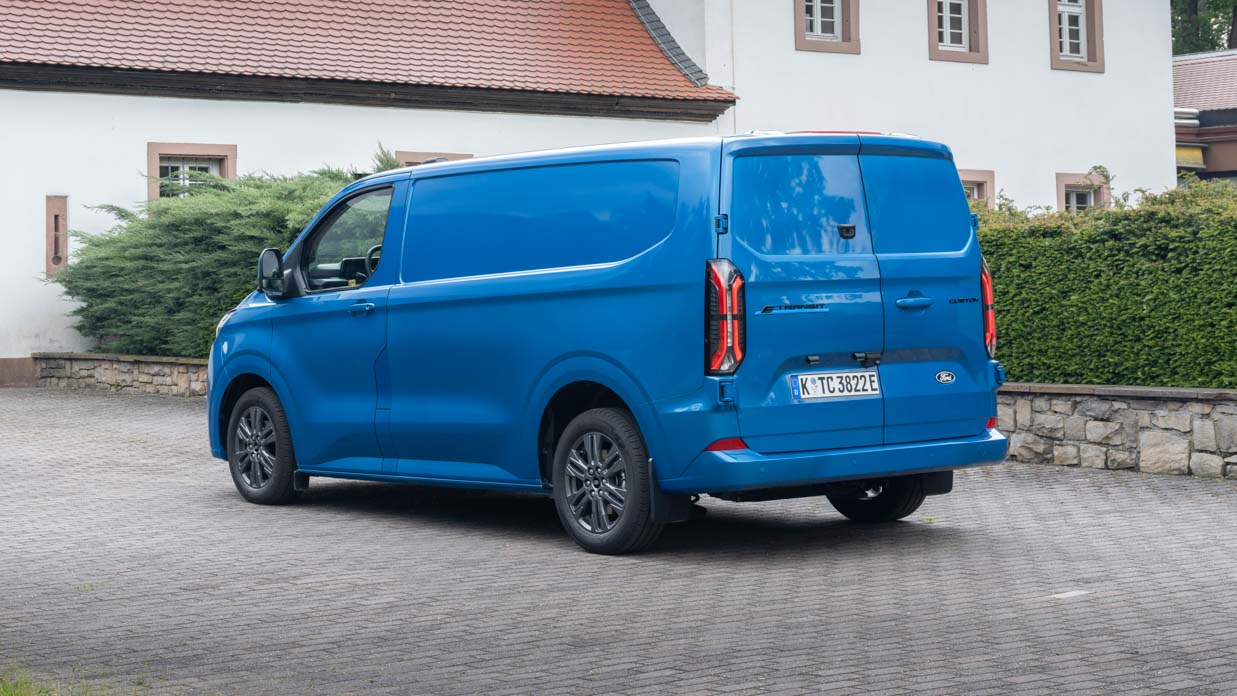
It might be a bit of a drop in annual sales from Ranger (63, 356) to Everest (15,071) to Transit Custom (2843), when looking at 2023 figures, but with Ford’s Escape midsize SUV now pulled from the market and the Puma small SUV on hiatus until an EV version arrives, Ford is leaning into its commercial models to bridge the gap.
As a result, new van products are on the way to Australia, some diesel and some electric, with more attractive pricing expected – and price cuts have already been confirmed for the existing E-Transit large van (now $89,990 before on-road costs).
Spun off from the general Transit range back in 2012 as Ford looked to provide a more focused product in the midsize van segment, the smaller Transit Custom isn’t just a big deal to Ford – it’s also a big deal to the world.
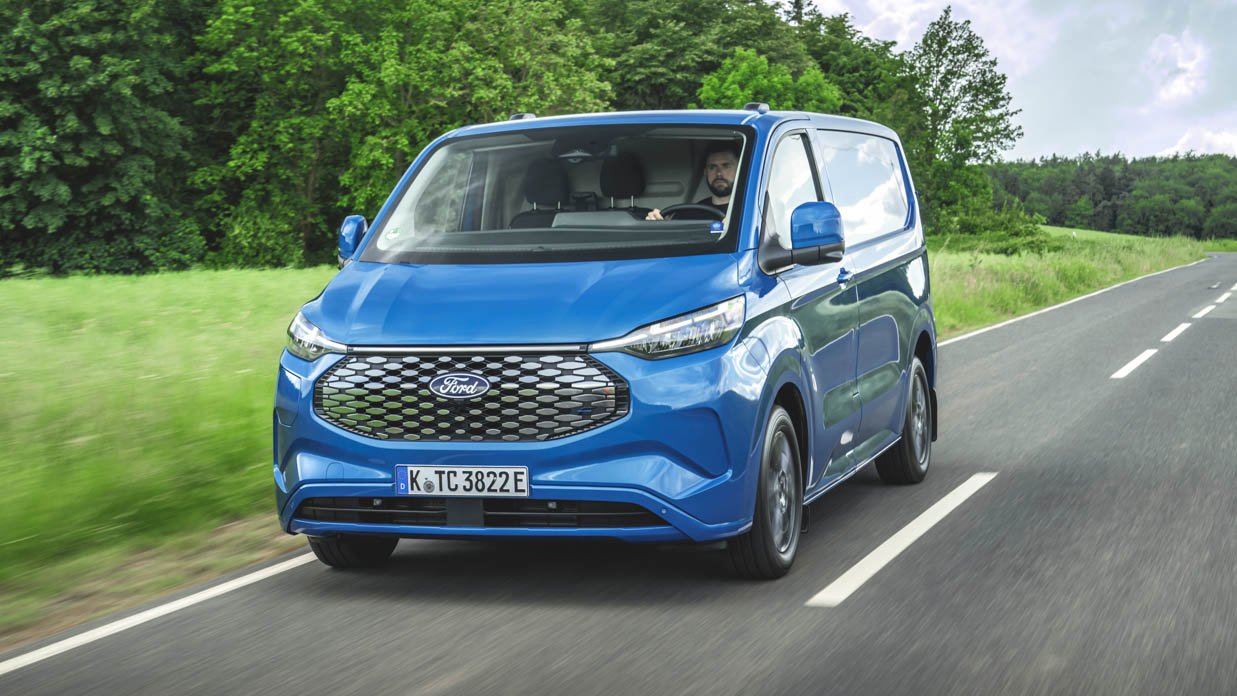
Developed in partnership with Volkswagen, which will offer the closely related T7 Transporter, the second generation Transit Custom is available with three core drivetrains – diesel, plug-in hybrid and fully electric – to cater to the changing landscape of commercial vehicles.
Today we are looking at the latter, known as the ‘E-Transit Custom’, which follows on from the larger E-Transit launched this time last year. The Custom brings improved driving range, mobile generator-like functionality and – probably – a sharper price tag, though we don’t know the final number yet.
Chasing Cars travelled to Germany to sample the E-Transit Custom and its diesel counterpart, along with the same-size Tourneo and E-Tourneo people mover variants which we’ll cover later in separate reviews.
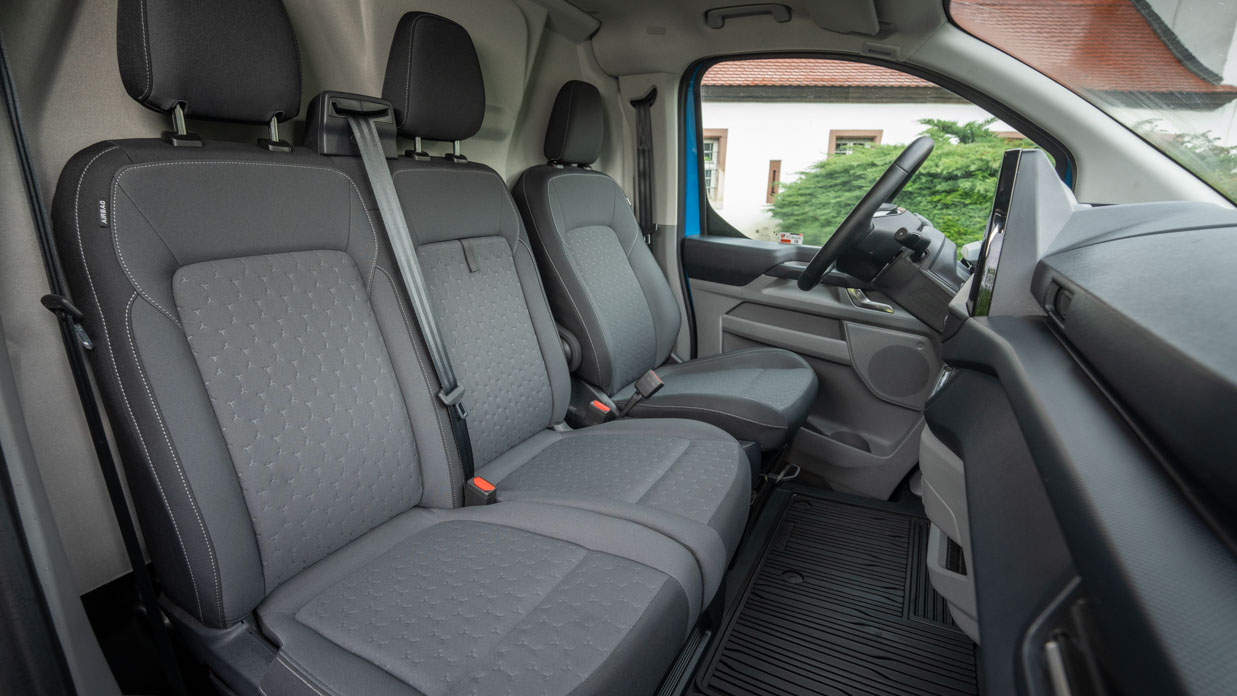
Full specs have yet to be confirmed for the Australian market, but we do know the E-Transit Custom will be sold locally as a three-seat van in long-wheel-base guise with the standard and high roof options offering 6.8 and 9.0 cubic metres of cargo space respectively.
Engineers are quite proud of the fact that the side door now opens to 1030mm and the payload is as good, if not better than the diesel version – at circa 970kg. Still, you can’t fit a Euro pallet through the side door like you can in a LWB Toyota Hiace (1340mm opening), which also outguns the Ford for payload with a 1075kg rating.
The diesel Transit Custom, which we will cover off in a separate review, will soon be available in Australia as both short and long-wheel-base forms as a general van and a dual-cab van.
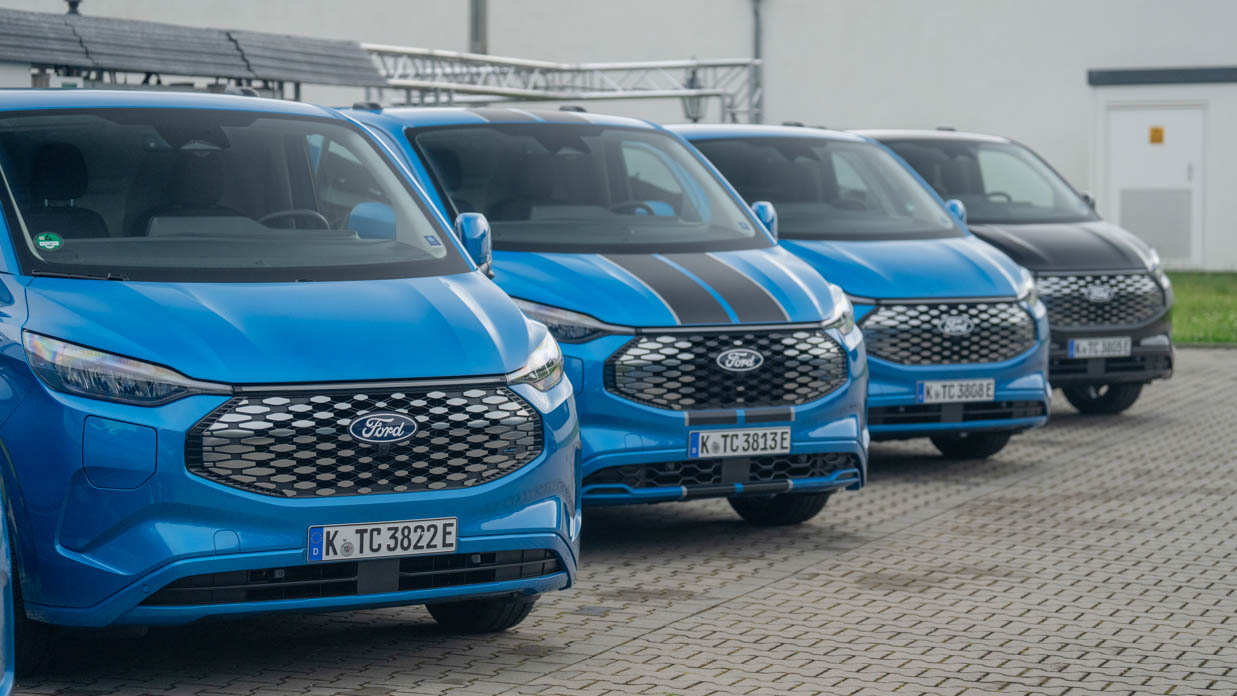
Ford’s E-Transit Custom is available globally with a single rear motor offered in 100kW, 160kW and even 210kW states of tune, with the more powerful versions trading grunt for range.
All three come with 415Nm of torque, though Ford Australian will initially opt for the 160kW version only. This promises up to 337km of range (WLTP) – 25km less than the rather lethargic 100kW base model. Ultimately, we think this was the right call.
That said, we would love to see the 210kW model emerge down under, effectively as an E-Transit Custom ST…
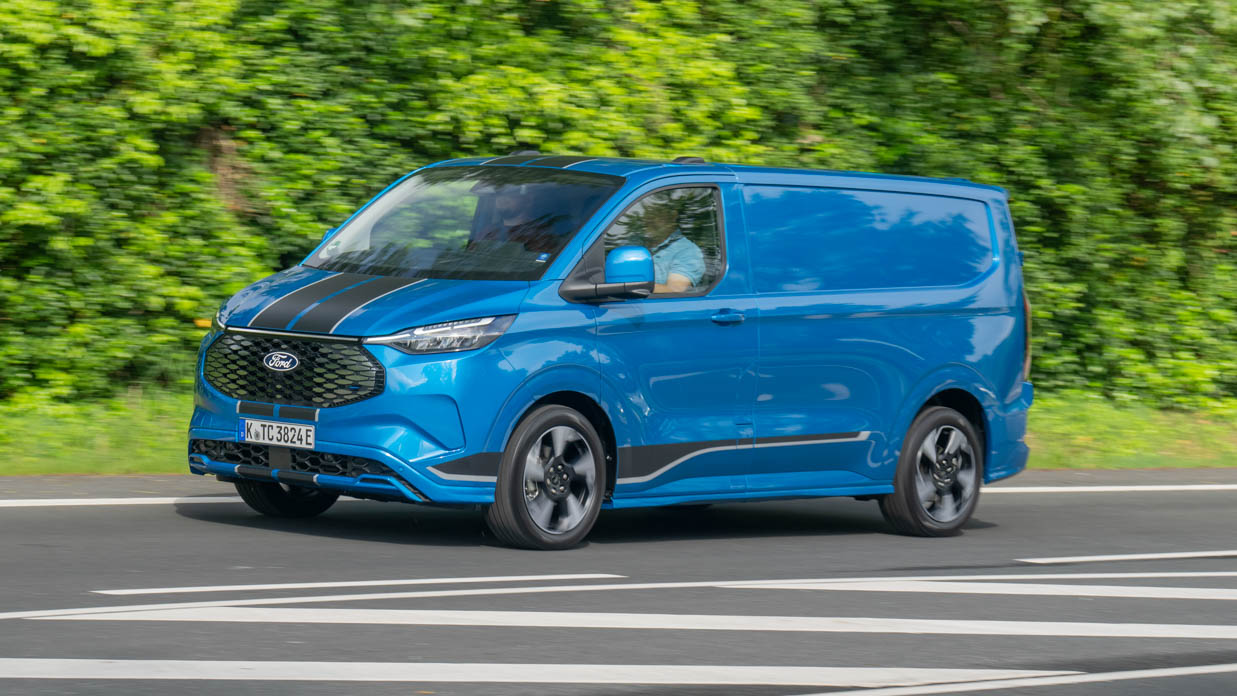
Range is a contentious matter with EVs, but Ford argues that (in Europe at least) a driving range of 337km is more than four times the average daily driving requirements of an average Transit Custom operator. Aussie figures for this model aren’t available, but Ford has previously said users of the larger Transit van travelled around 115km per day on average in our country.
Either way, it’s unlikely that most operators will be experience range issues on a daily basis, though some undoubtedly will, and the diesel will likely be the better option for them.
Operators of electric vans who can charge overnight at a depot will find the shift to EV is a seamless timesaver that cuts fuel costs while improving refinement and driver satisfaction, as we experienced on our test drive.
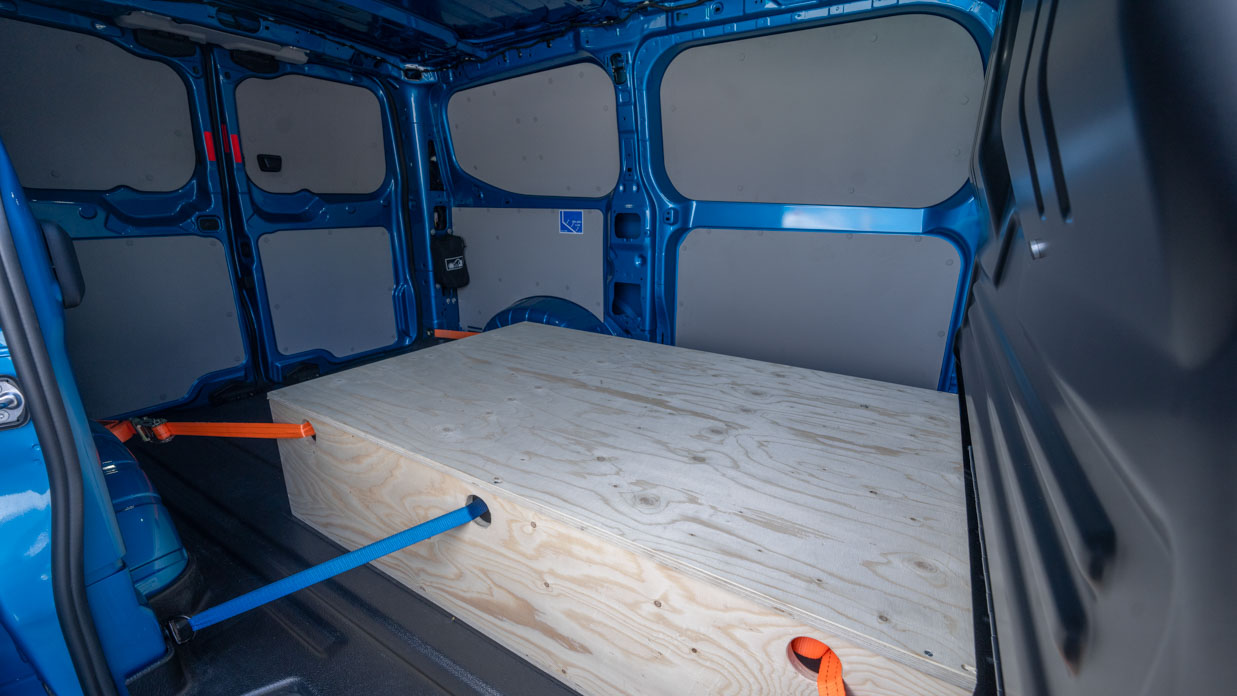
Pictured: the SWB version, Australia will receive the LWB
In Europe, operators save more time when it comes to maintenance as in that market, Ford allows E-Transit Customs to drive for two years and, amazingly, unlimited kilometres between scheduled services – we’re yet to see if this convenience is afforded to Aussie buyers.
Ford says upkeep should be about 40 percent cheaper to own and run than its diesel counterpart.
We drove the E-Transit Custom with a 400kg kilograms of payload strapped into the rear of the van, and saw an average consumption of 20kWh/100km in mixed driving conditions – implying a range from 100-0% of about 320km.
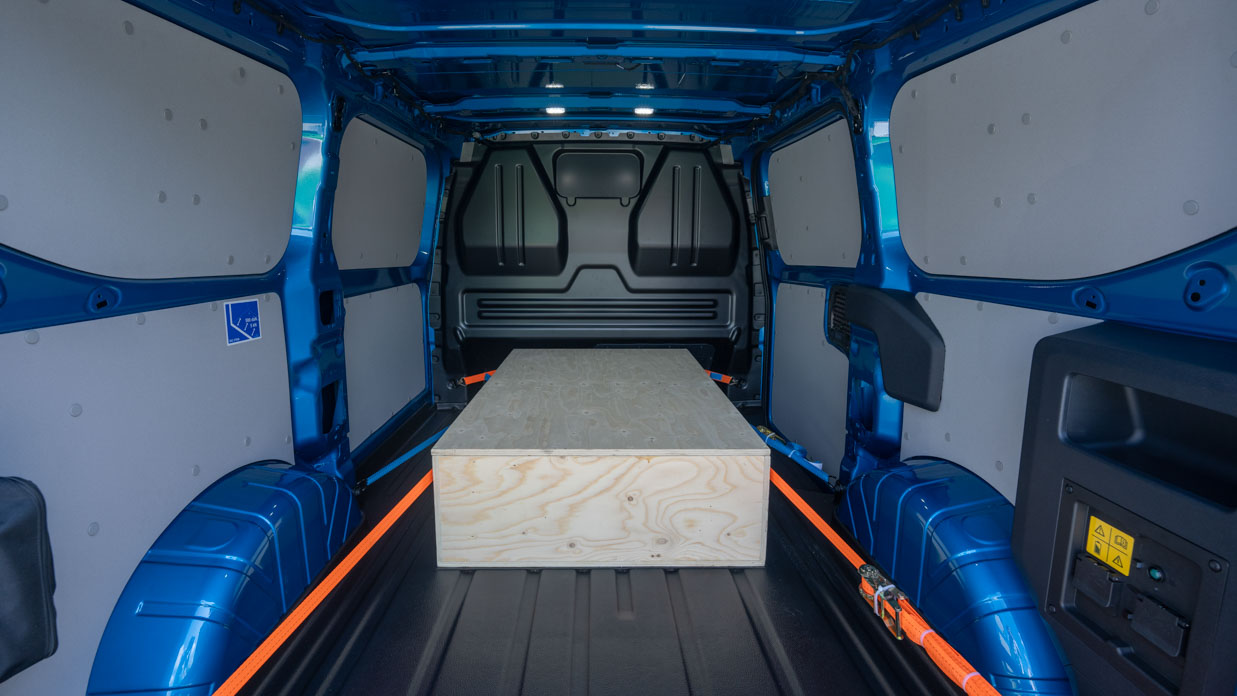
Pictured: the SWB version, Australia will receive the LWB
For a real-world test, that is admirably close to Ford’s claimed range.., and if you divide that by the 64kWh usable battery size works out to be around 320km, roughly similar to the range claim.
Once that battery goes flat, drivers can top it up from 10 to 80 percent in 39 minutes using a 125kW fast DC faster charger out on the road. More commonly, E-Transit Customs will be plugged in at a depot or warehouse. Recharging from 0-100% in this context takes 6.7 hours on a three-phase AC wallbox, or about 10 hours on a single-phase AC wallbox.
Still, the electric E-Transit Custom will be more expensive than a diesel to purchase. In the case of the larger Transit model, the EV – despite a price cut – is 40 percent dearer to purchase.
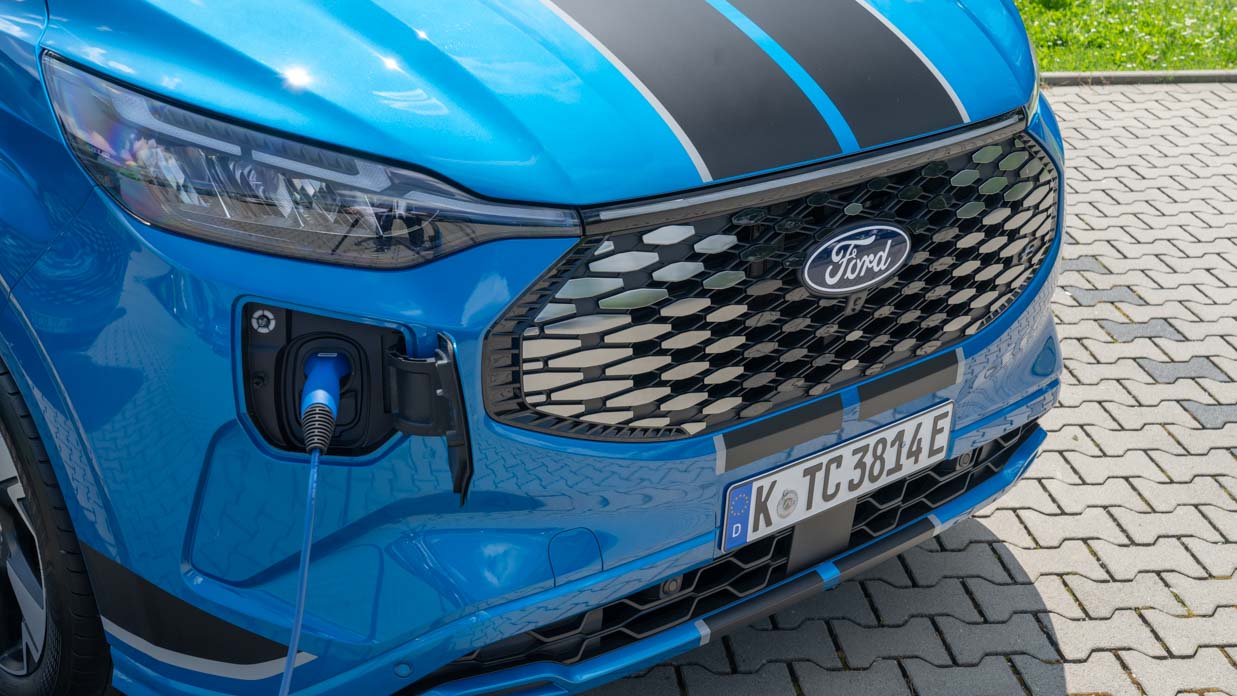
If that proportion holds for the Custom, the electric version would cost something like $81,990. The LWB diesel Trend grade is $57,590 before on-road costs.
So, for what kind of buyers does the EV make sense? Mainly those doing bigger mileage – but not so much mileage that you go beyond the van’s circa-330km range.
At an average 115km of driving per workday, an operator’s spend on diesel would be about $5000 per year, while the electric van would consume about $2000 per year in electricity based on a tariff of $0.30 per kilowatt-hour charge.
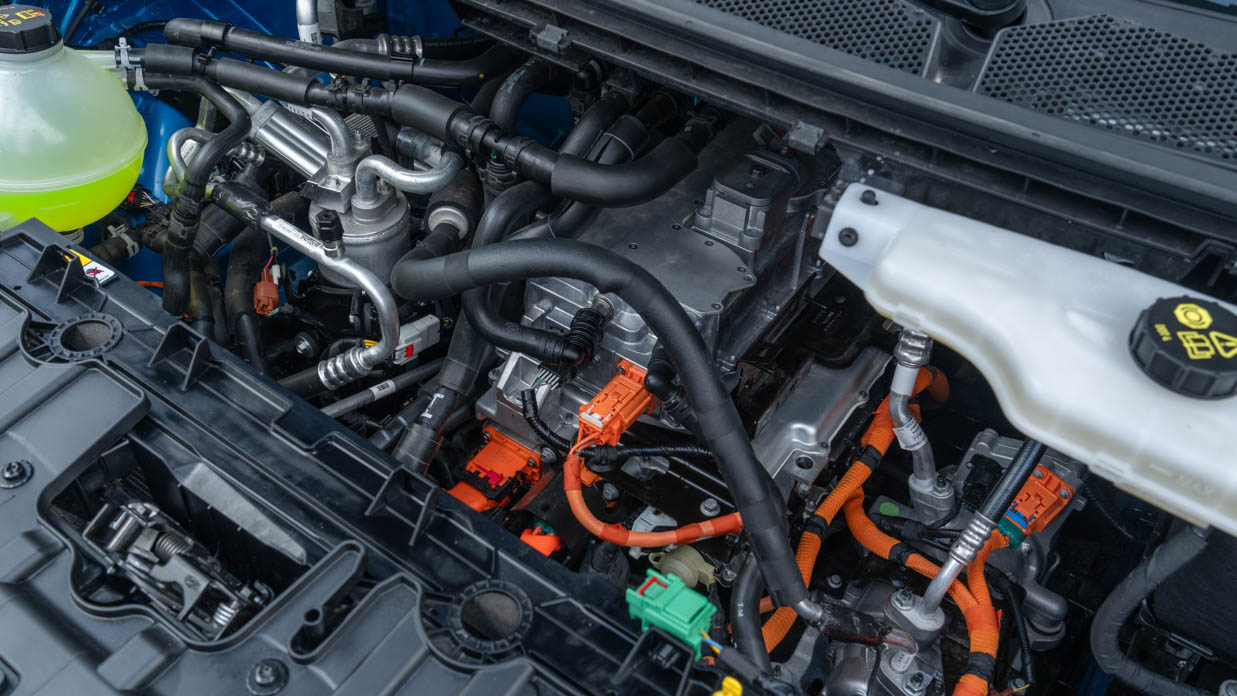
That would see the electric version break even in about eight years if it starts out being 40 percent more expensive to buy.
But at 200km of driving per workday, the benefits of going EV compound faster, with an annual fuel spend of $8000 (diesel) or $3000 (electricity) reducing the breakeven period to just five years.
That’s not to mention that the electric version is quicker, better to drive and much more refined – an electric van is considerably quieter with far fewer vibrations than any diesel iteration, which would make drivers happier.
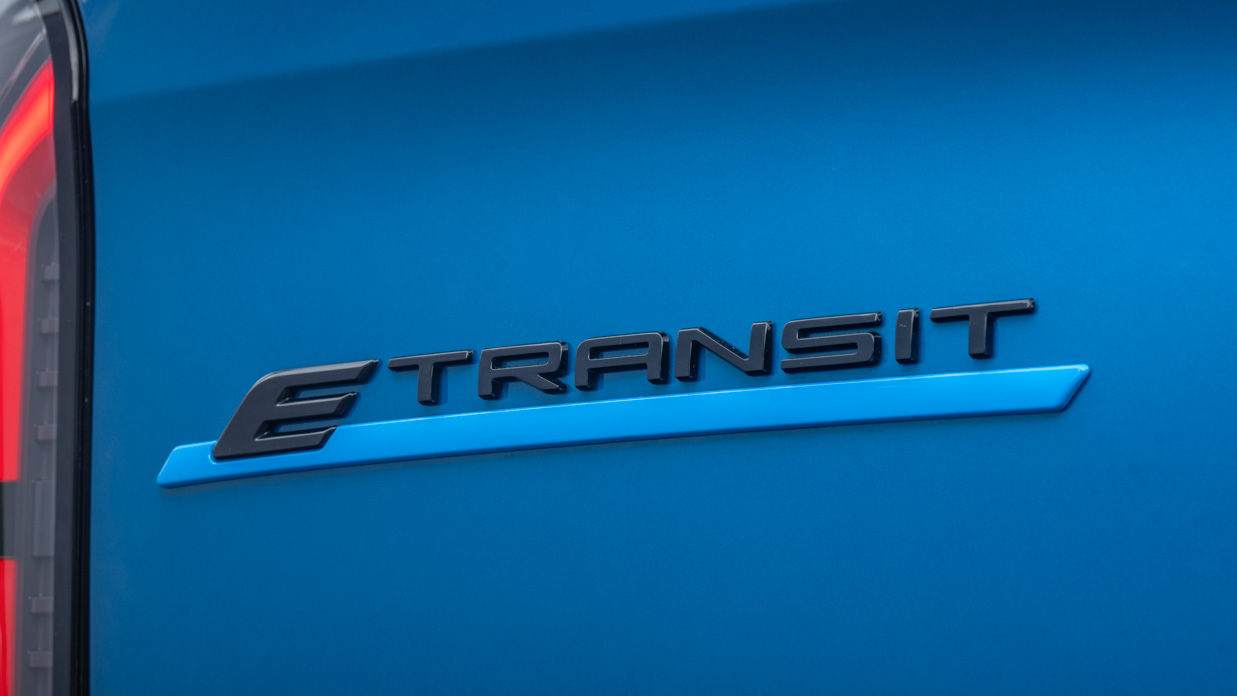
There are also smaller savings on the maintenance front with electric Ford vans costing about half as much as the diesel to service – $800 over 120,000km rather than $1600, at least on the larger Transit models. We don’t have final maintenance prices for the Transit Custom yet.
The E-Transit Custom is fitted with a heat pump as standard, so hopefully its range performance should hold up to colder weather in Australia’s southern states.
It’s also worth noting that until the E-Transit, the E-Transit Custom is rated to tow with a braked capacity of 2300kg. Diesel versions offer slightly more at up to 2800kg.
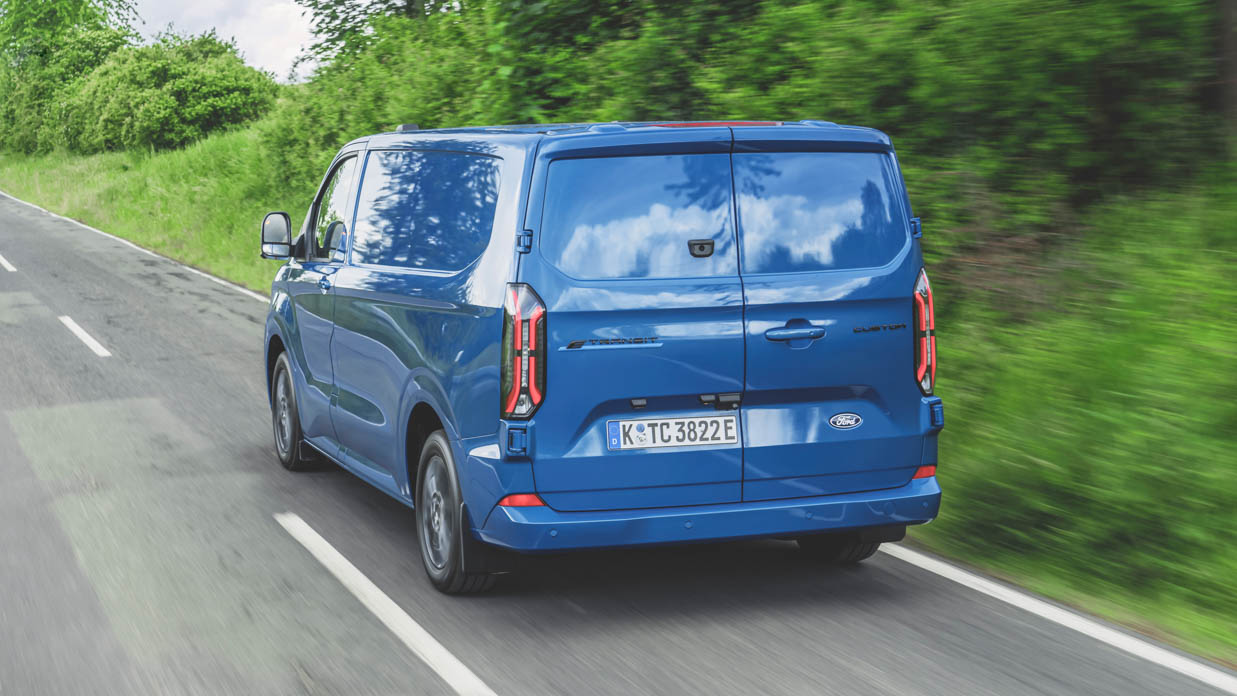
But what’s it like to drive? Well, an interesting benefit of switching from the diesel to the electric version is the van goes from being front- to rear-wheel-drive.
Right now we can’t speak to how the two compare just yet due to global embargoes (we’ll update this review at a later date) but Ford said it made this decision to afford the E-Transit Custom greater driving dynamics and traction.
We tested the E-Transit Custom in a variety of conditions though, from seriously rough urban backstreets, sweeping country roads and fast highway sections and the experience was remarkably controlled, inspiring confidence in the EV’s driving ability.
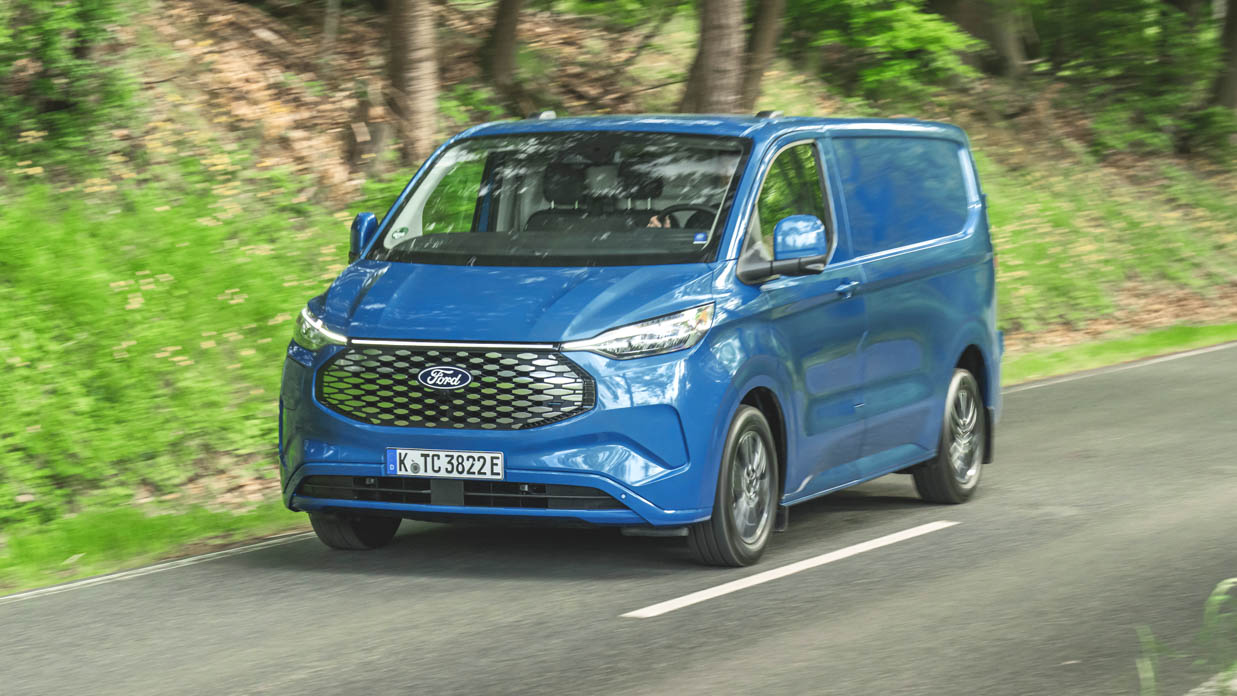
Van manufacturers often choose FWD, not just because it’s cheaper and uses fewer parts, but also because the centre driveshaft can compromise the floor shape and thus load space, of course with an electric motor not requiring a driveshaft there are fewer such compromises.
The second-generation Transit Custom is the latest commercial van, alongside others like the Volkswagen Caddy, to abandon a live rear axle and leaf spring setup for independent rear suspension in pursuit of more predictable handling and ride compliance when unladen.
The result is brilliant, for a van, the ride was fairly accomplished across a variety of driving. Plus, combined with the near-silence of the electric motor it felt like a big improvement over a traditional diesel.
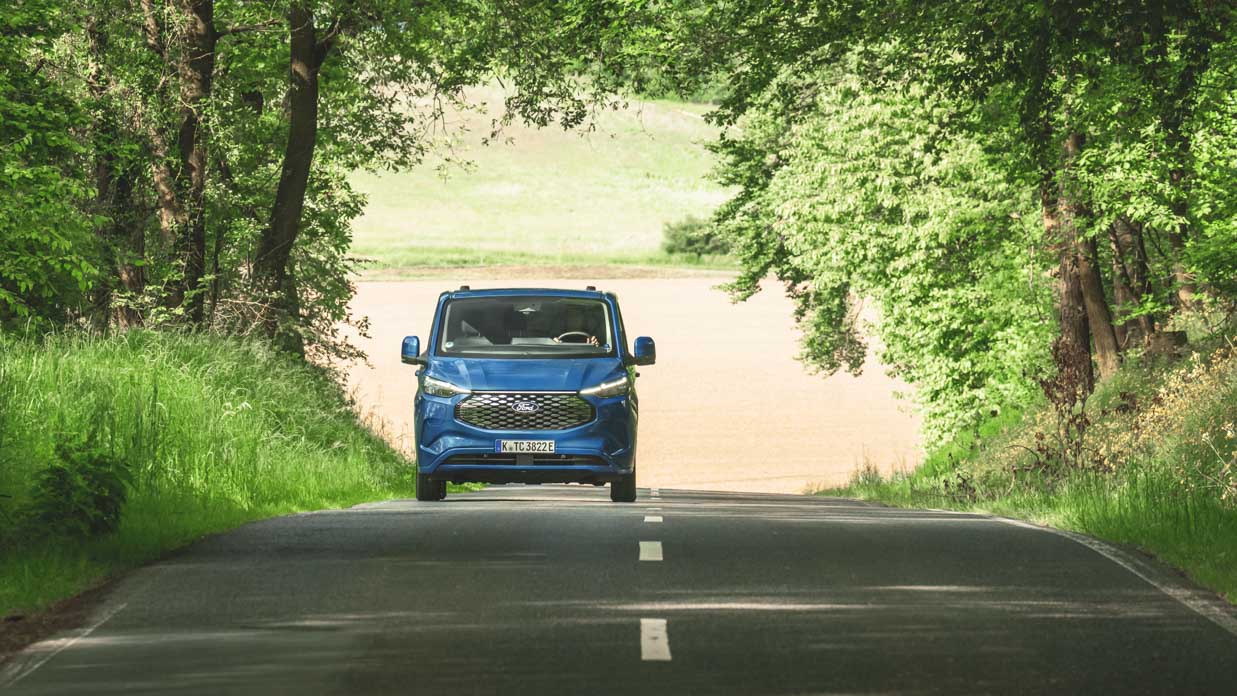
As you would expect, the experience isn’t as serene as your typical passenger car, with wind noise whistling around the body and tyre noise quite audible in the lightly insulated cabin.
Still, it’s certainly a big step up from commercial vans of the past, and the combination of independent rear suspension with an electric motor really does have a transformative effect and the lack of excess NVH over other a diesel reduces mental stress on a big day on the road.
Full specifications have yet to be detailed of the E-Transit Custom, but the specification destined for our market is said to be similar to the Trend sold in Europe, which is treated as the entry-level grade for the diesel in Australia.
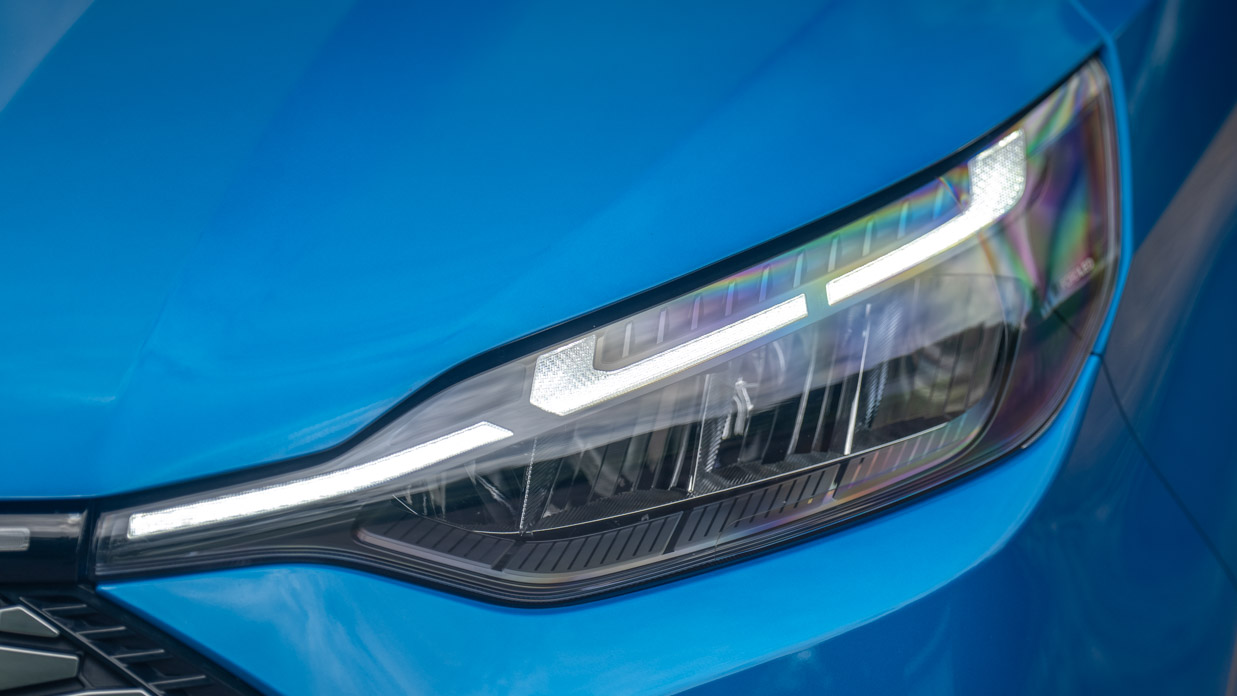
Although fairly basic, the E-Transit Custom is fitted with LED headlights and tail-lights, eight tie-down points, power-folding and heated mirrors, body-colour front and rear bumpers along with important safety kit like tyre pressure monitoring, trailer sway control, a digital rear-view mirror and front parking sensors to name a few.
Engineers were particularly proud of the fact they were able to free up extra storage in the dashboard by integrating the front airbag for bench seat passengers 2 and 3 into the roof, serving as a front and front-centre airbag. The E-Transit Custom hasn’t yet been rated by ANCAP, but strong results have been seen overseas.
Missing from the standard kit though is a full-size spare, with buyers told to make do with a tyre repair kit, which is a hindrance for a work vehicle. Ford insists such a feature is no longer a priority for buyers.
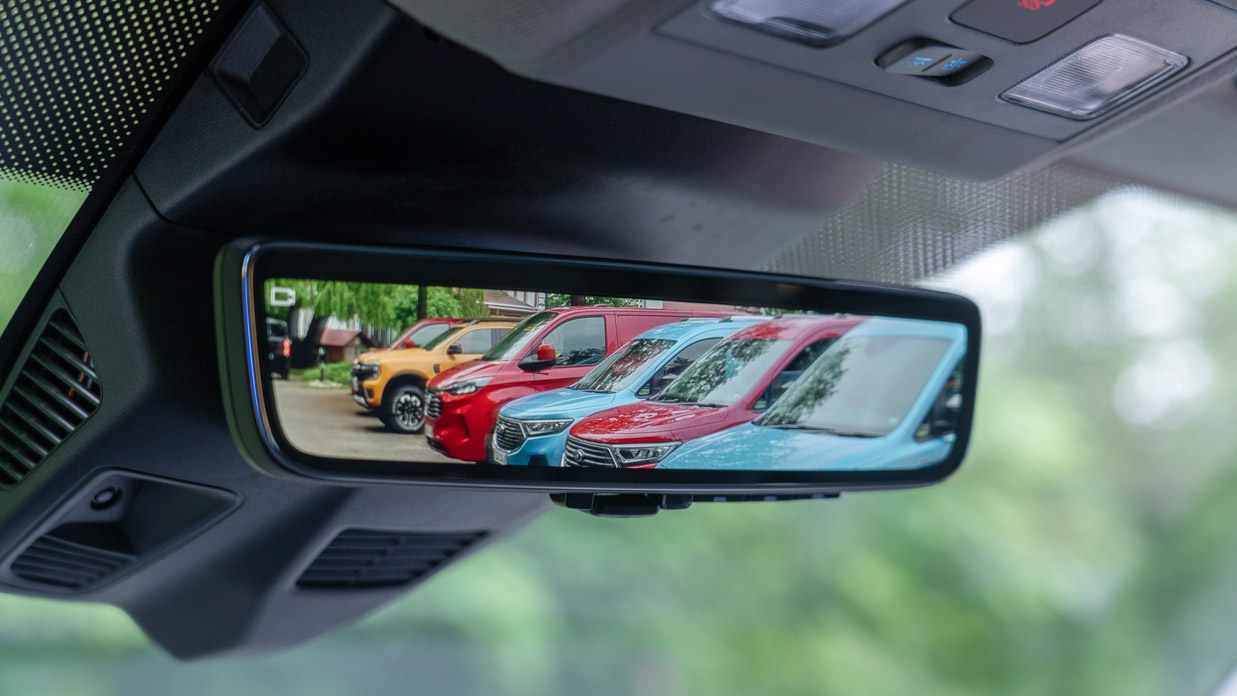
The interior features a cloth upholstery on the seats which proved to be fairly comfortable in our initial testing, with the front suspension redesigned and shifted forward for the new generation to make it easy to walk through one side of the van to the other.
Fittingly durable hard plastics are found throughout the cabin and storage can be found across the dash and under the passenger seats. No overhead storage, sadly.
A 13.0-inch touchscreen sits in the centre of the dashboard and works in conjunction with a separate 8.0-inch unit (shared with the Ranger) that serves as the gauge cluster.
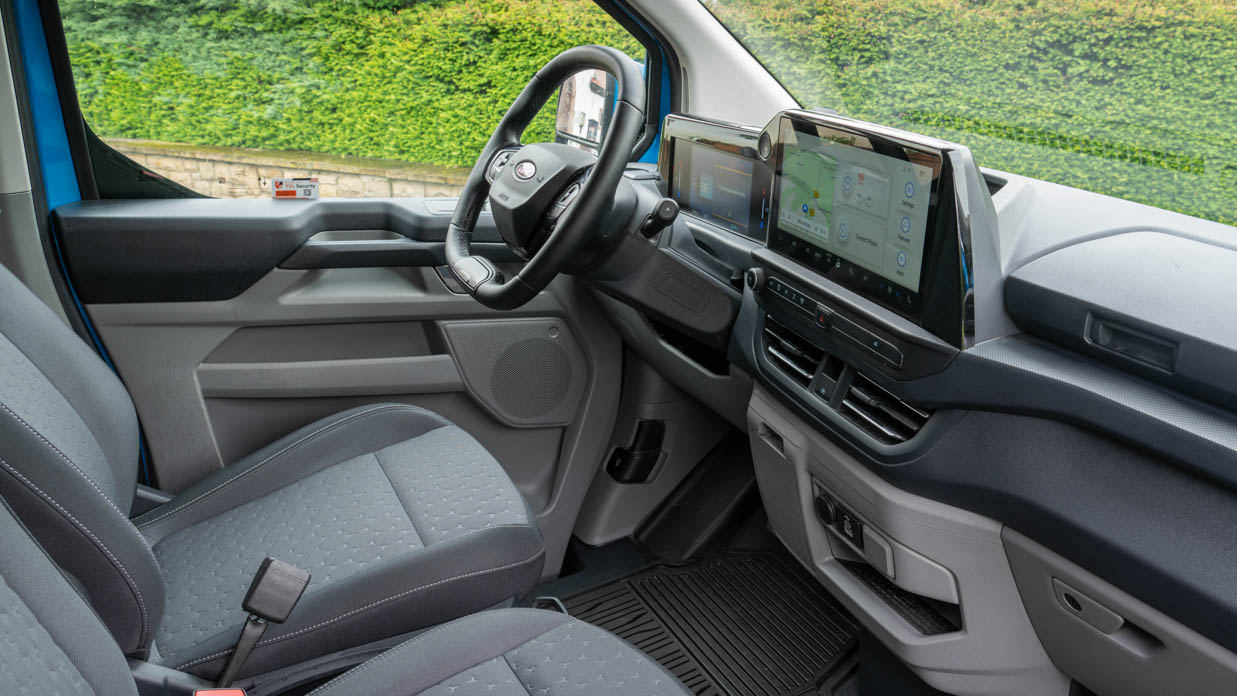
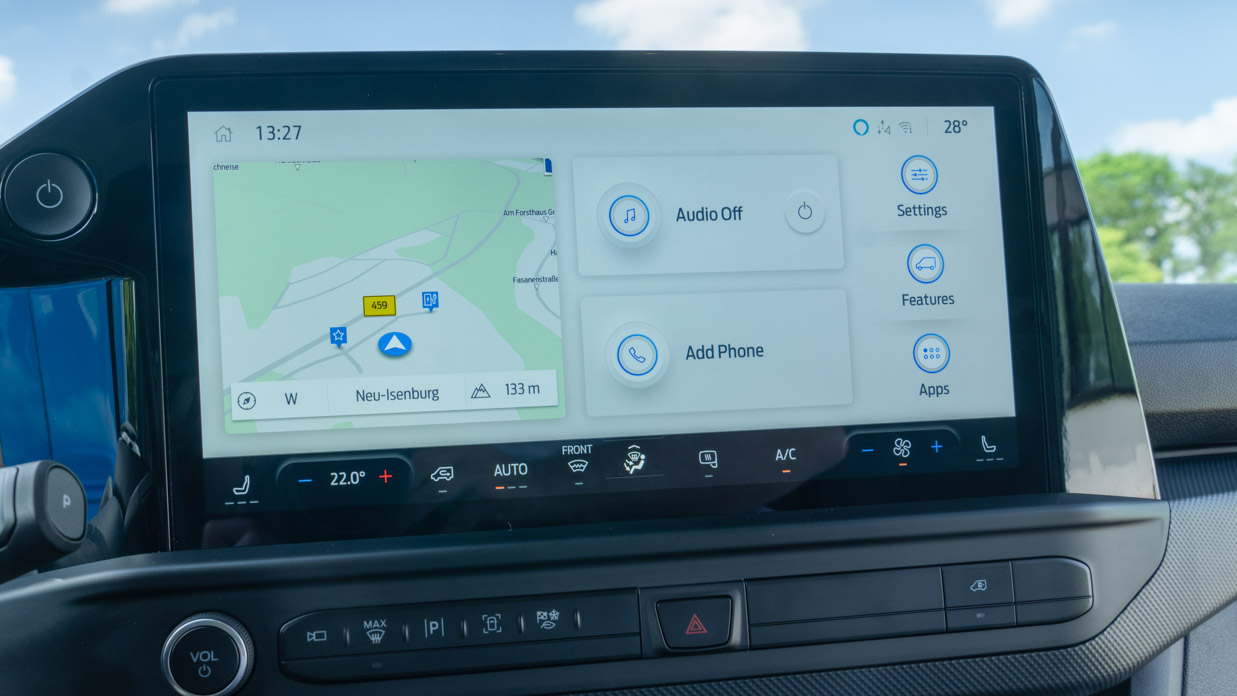
The multimedia system runs on Ford’s latest Sync 4 software which looks clean and performs well. Apple CarPlay and Android Auto are both wireless.
Although intuitive to use, it’s a shame Ford has abandoned physical climate control buttons and integrated them into the touchscreen as those who regularly get their hands dirty will likely be finding themselves frustrated by the decreased response, or simply just have a very dirty screen much more quickly.
The star of the show though, is the steering wheel.
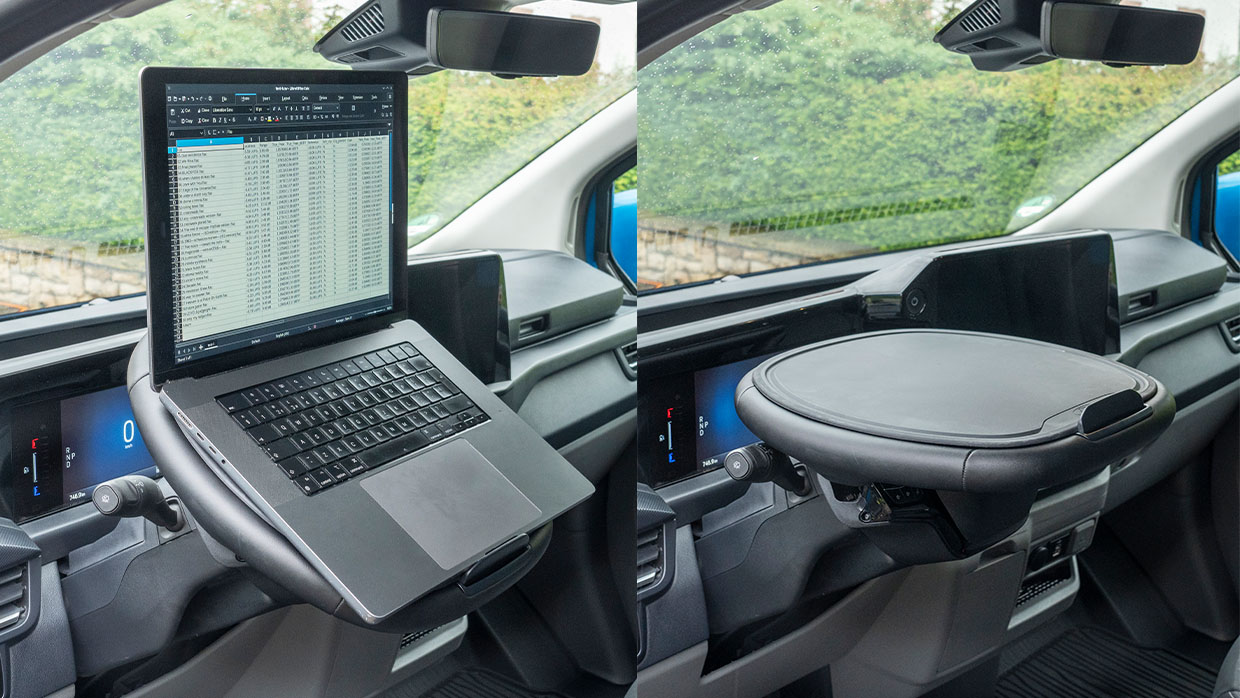
Available as part of the Mobile Office pack, the steering wheel gains the ability to tilt at a 45-degree angle when parked so you can use it as a laptop stand.
There is also the ability to fold it completely flat, which combined with the provided and easily stowable tray turns the wheel into a convenient place to eat your lunch or do paperwork.
In the cargo area, Ford has harnessed the 64kWh battery underneath and fitted a set of three-pin sockets known as Pro Power Onboard which are capable of putting out up to 2.3kW, enough to power tools or whatever else is needed during the day.
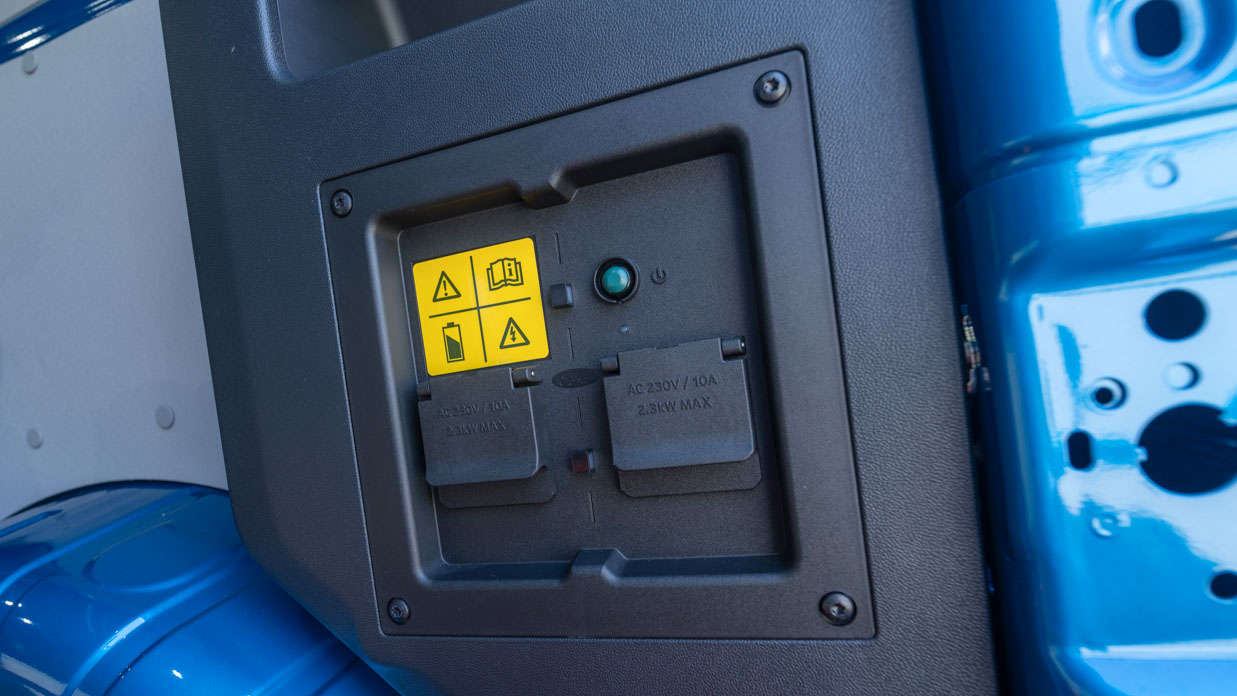
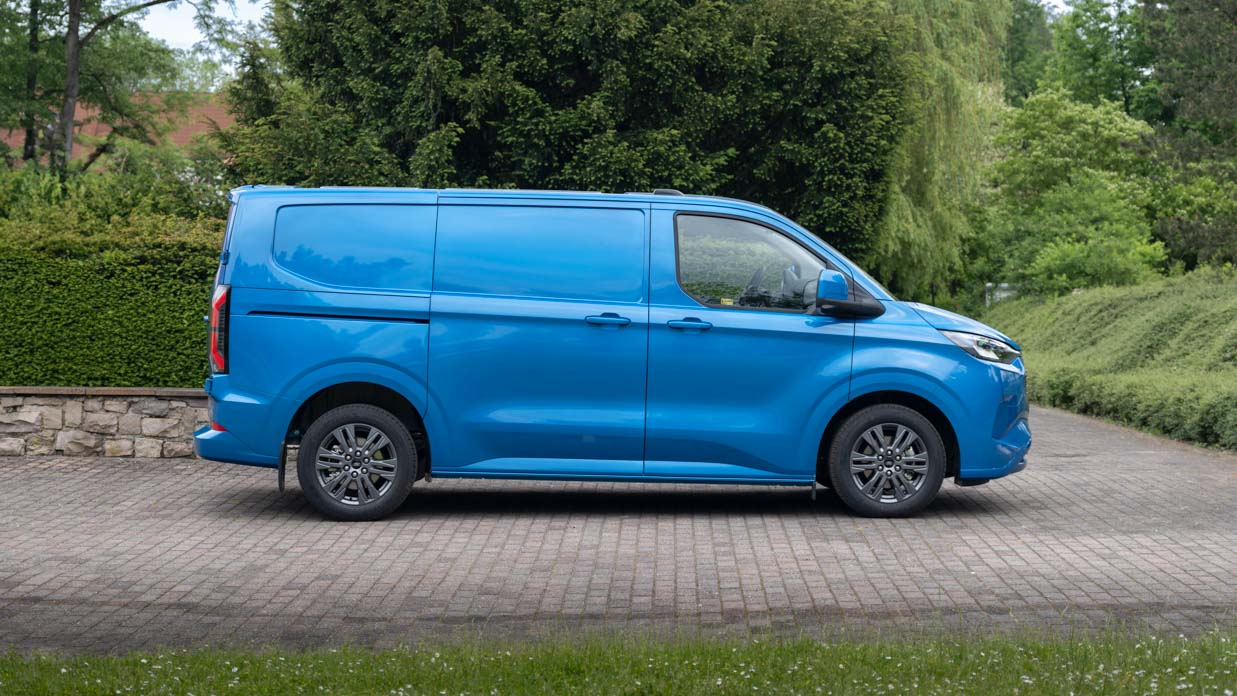
So how much is it all going to cost?
Ford has not yet confirmed pricing for the E-Transit Custom but it has been working to lower the price of its EVs and recently lopped some $15,000 off the price of the big-body E-Transit to $89,990 before on-road costs which sets the hard ceiling for our predictions.
There is already some competition in this space with the LDV eDeliver 7 priced at $59,990 (for ABN buyers) and the Peugeot E-Expert slightly higher at $79,990, with the latter set to arrive around the last time as the E-Transit Custom in the fourth quarter of this year.
The diesel version of the LWB Trend starts at $57,590 before on-road costs and is much more affordable by comparison, given the premium applied to the larger E-Transit compared to its internal combustion counterpart we do expect it to be closer to the Peugeot in price however.
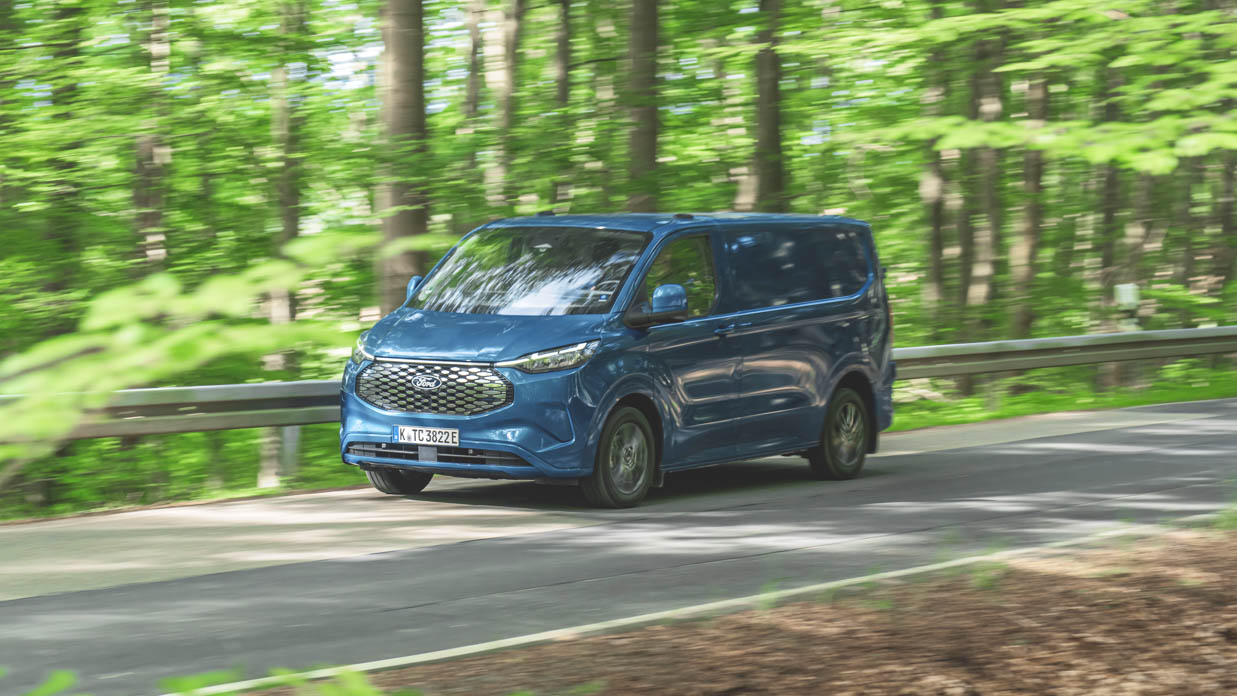
But with Ford recently slashing the entry price of its cheapest EV – Mustang Mach-E – to circa-$65K, there is the possibility it could become more affordable in the short to medium term,
With running costs estimated to be 40 percent cheaper over the life of the van and a price point that’s within the reach of sole traders who can access rebates to further lower the cost in some states, the E-Transit Custom offers enough carrot and increasingly less stick for those who wish to go all-electric.
About Chasing cars
Chasing Cars reviews are 100% independent.
Because we are powered by Budget Direct Insurance, we don’t receive advertising or sales revenue from car manufacturers.
We’re truly independent – giving you Australia’s best car reviews.
The estimate provided does not take into account your personal circumstances but is intended to give a general indication of the cost of insurance, in order to obtain a complete quote, please visit www.budgetdirect.com.au. Estimate includes 15%^ online discount.
^Conditions Apply
Budget Direct Insurance arranged by Auto & General Services Pty Ltd ACN 003 617 909(AGS) AFSL 241 411, for and on behalf of the insurer, Auto & General Insurance Company Limited(ABN 42 111 586 353, AFSL 285 571).Because we don’t know your financial needs, we can’t advise you if this insurance will suit you. You should consider your needs and the Product Disclosure Statement before making a decision to buy insurance. Terms and conditions apply.
Indicative quote based on assumptions including postcode , 40 year old male with no offences, licence suspensions or claims in the last 5 years, a NCD Rating 1 and no younger drivers listed. White car, driven up to 10,000kms a year, unfinanced, with no modifications, factory options and/or non-standard accessories, private use only and garaged at night.
^Online Discounts Terms & Conditions
1. Discounts apply to the premium paid for a new Budget Direct Gold Comprehensive Car Insurance, Third Party Property Only or Third Party Property, Fire & Theft Insurance policy initiated online on or after 29 March 2017. Discounts do not apply to optional Roadside Assistance.
2. Discounts do not apply to any renewal offer of insurance.
3. Discounts only apply to the insurance portion of the premium. Discounts are applied before government charges, taxes, levies and fees, including instalment processing fees (as applicable). The full extent of discounts may therefore be impacted.
4. We reserve the right to change the offer without notice.